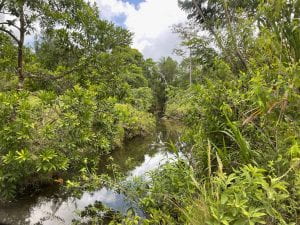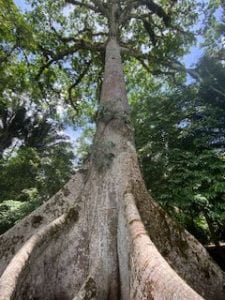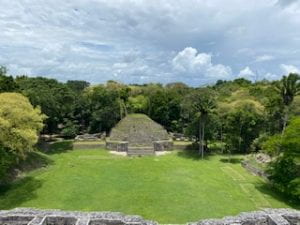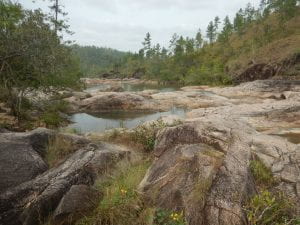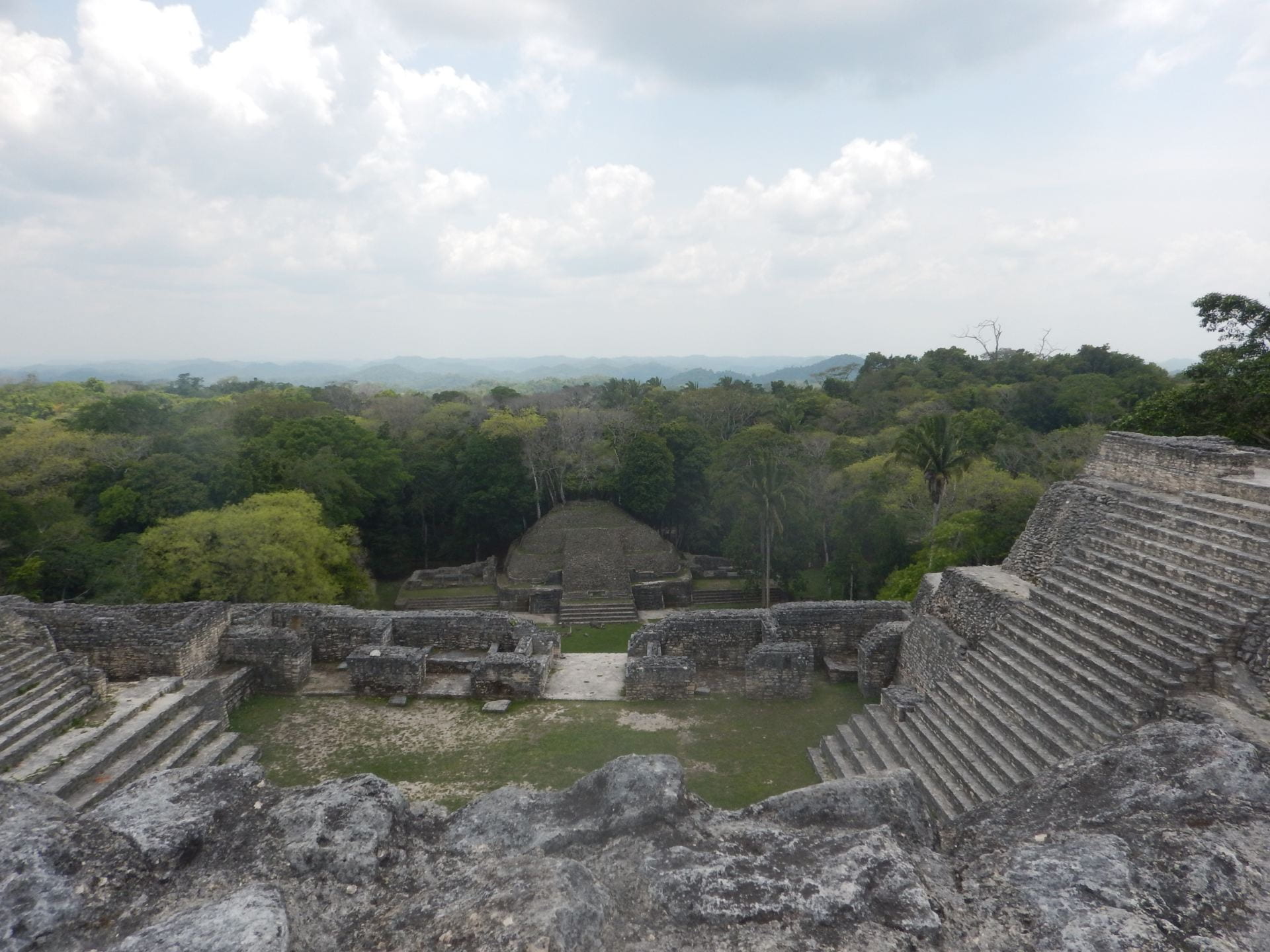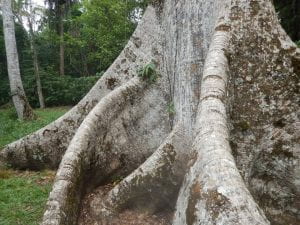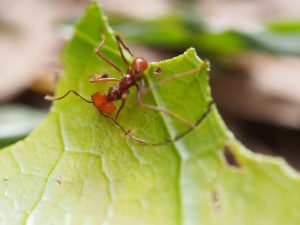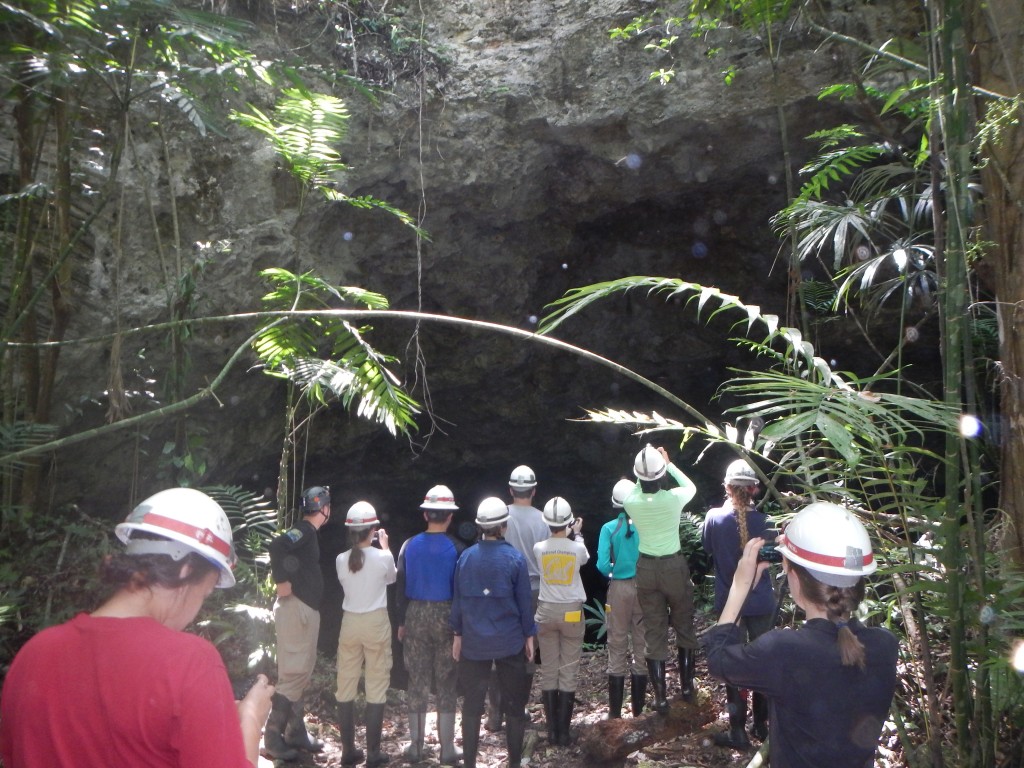Hey guys! Once again, it’s Michiel : )
We woke up this morning at the TEC (one of the most beautiful places ever) and quickly got ready for breakfast at 6:30. After breakfast, everyone gathered their luggage near the side of the road and got into vans for our journey to Caracol. On our way to Caracol, I got to sit in the front seat, where I prepared for my topic lecture that would be happening later that evening (spoiler alert). I read a bunch of papers with tiny letters while we were traveling on very bumpy roads. I may have gotten a little carsick, but it was only a little headache, and I was committed enough to presenting a wonderful lecture that a headache wouldn’t stop me. I managed to read everything I needed to by the time we got to Caracol. There, we saw a HUGE Ceiba tree, Mayan middle-class homes, and a beautiful pyramidal temple. We climbed to the top of that temple, looking in ancient bedrooms and tombs on the way up. Once we finally got to the top, we got a truly amazing view of the Chiquibul Forest. While we were there, we also saw white lined sac bat. After the pyramidal temple, we saw their place of astronomical observation, an area where they played a ballgame, and an aquifer. After all this, we had lunch, during which we were able to hear Black Howler Monkeys (Alouatta pigra) screaming throughout the forest. I, unfortunately, wasn’t able to get any pictures of these monkeys, but here is a picture of us on top of the temple and me next to a Ceiba tree!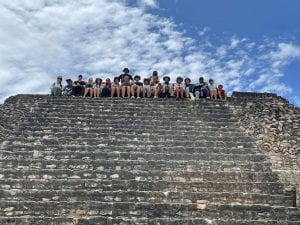

After lunch, we left Caracol and continued our journey to Las Cuevas Research Station. On our trip, we saw three turtles crossing the road, two scarlet macaws, and a toucan! Once we finally reached the station (around 4:30), we were shown around. The station is really nice; I think I’m going to really enjoy it here. After our orientation, we began catching up on lectures that we had fallen behind on. After two taxon lectures, we had dinner, then I presented! I presented on life in the rainforest canopy, and I think I did really well, but we’ll see. After I presented, there were a couple more lectures, then we worked on our blogs and field notebooks and went to bed.
I’m really excited for everything to come. I’ll be sure to keep y’all updated!


